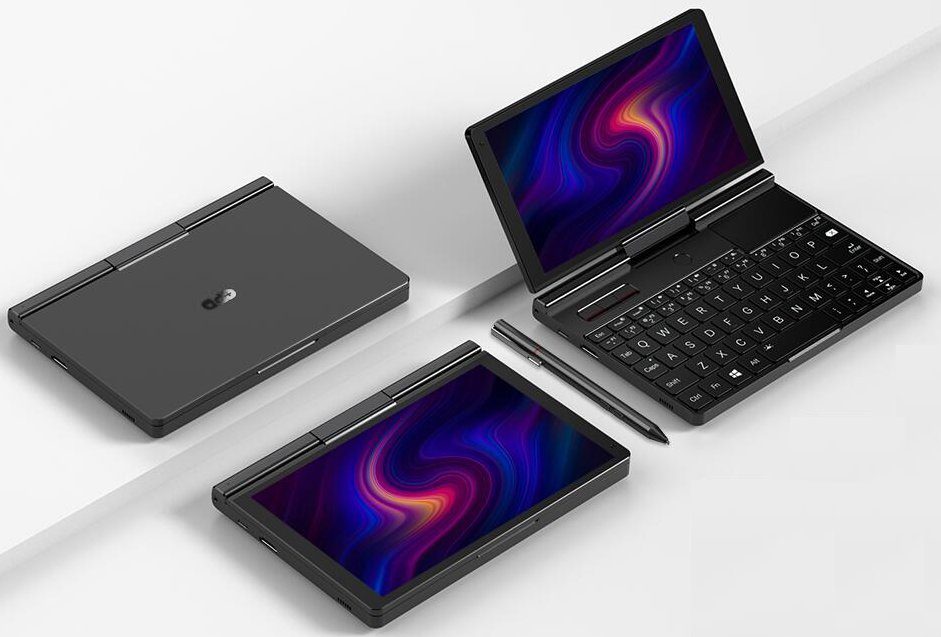Revolutionizing the ultra-mobile PC (UMPC) space, GPD brings forth, Unveiling the GPD Pocket 3 – a remarkably compact yet potent mini-laptop with a fascinating blend of nimbleness and functionality.
A Glimpse into GPD’s UMPC Evolution
GPD, a pioneering Chinese company in the UMPC sphere, has consistently rolled out innovative tiny laptops and handheld computers, rekindling the UMPC dream that once seemed dimmed by the predominance of tablets.
Unveiling the GPD Pocket 3 marks a pivotal point in GPD’s illustrious journey. Having introduced devices like the GPD Win and the GPD Pocket in previous years, each illustrating unique design principles, GPD integrates functionalities, thereby catering to diverse user demographics, from gamers to IT professionals.
Zooming into the GPD Pocket 3’s Exceptional Modularity
Embodied with a versatile design, Unveiling the GPD Pocket 3 presents a modular port configuration – a rarity in mini-laptops, offering users the luxury to interchange one of its USB ports for diverse I/O options, rendering it a utile device for various professional scenarios.
Specifying the Modular Capabilities
Unveiling the GPD Pocket 3
Out of the box, the Pocket 3 possesses a USB 3.0 port. Yet, with a minimalistic approach of removing two screws, users can substitute the USB module with:
- RS-232 Serial COM Port**: Essential for IT specialists and engineers interacting with legacy hardware.
- KVM Module**: Enabling HDMI and USB inputs, it metamorphoses the Pocket 3 into a convenient terminal for server management or remote PC control.
Synergizing Modularity and Functionality
Further, the KVM module allows the Pocket 3 to act as an input device for other hardware, transforming it into a functional extension of connected devices, ultimately permitting unparalleled convenience for IT administrators and professionals dealing with headless computers or servers.
The Ultimate Guide to Mobile Gaming: Unveiling the GPD WIN Mini Portable Gaming PC
Encompassing Robust Performance Within a Petite Frame
GPD doesn’t compromise performance for the sake of size. Unveiling the GPD Pocket 3, even with its dainty stature, encapsulates a muscular Intel Core i7-1195G7 processor, ensuring users experience brisk, responsive, and reliable performance.

Striking a Harmonious Balance
Interestingly, while power users may harness the raw power of the i7, the configurable TDP settings available in the BIOS (pending final release specifications) allow a meticulous balance between performance and efficiency to meet distinct use-case scenarios.
Ensuring a Seamless User Experience
Navigating the fine line between portability and usability, the Pocket 3 integrates a backlit keyboard, ensuring adequate typing capabilities, coupled with an 8-inch display that is receptive to pen and touch input.
With a swivel hinge, the screen effortlessly folds down over the keyboard, inviting users to utilize it in a tablet mode, adapting to varied use-cases and preferences.
A Symbiosis Between Miniature Design and Expansive Connectivity
Unveiling the GPD Pocket 3 doesn’t skimp on connectivity options. Despite its minuscule form factor, it accommodates:
– Multiple USB Ports (Types A and C)
– HDMI and Ethernet Ports
– A 3.5mm Headset Jack
Where Potential Meets Possibility
Envisaging future expandability, the modular system permits future integrations, potentially exploring functionalities like 4G LTE modules or other I/O options, subject to regulatory approvals and market demands.
Final Thoughts: A Petite Marvel Tailored for Modern Professionals
Unveiling the GPD Pocket 3 elegantly marries compactness with a potent performance, shattering the conventional belief that small sizes indicate limited capabilities. The myriad of features and the inventive modular design accentuate its status as a miniature marvel in the realm of UMPCs.
For professionals constantly on the move or those necessitating a compact, yet robust computing device, the GPD Pocket 3 emerges not merely as a choice but a quintessential companion that comprehensively understands and adeptly meets their computational and mobility needs.


